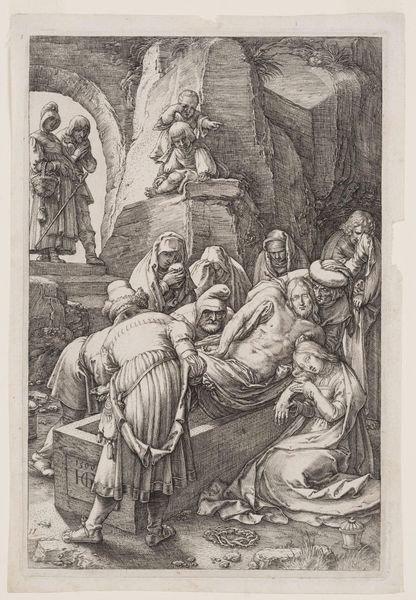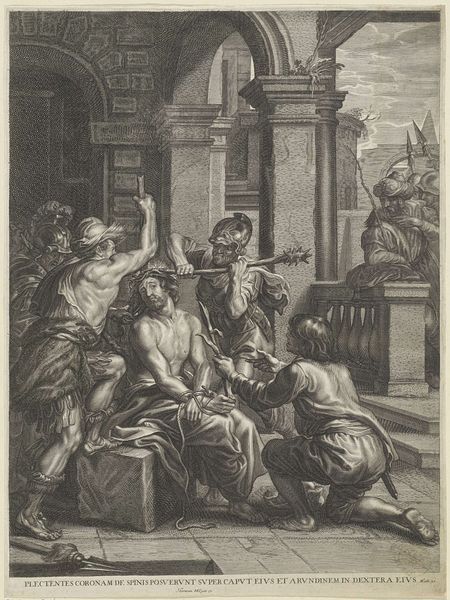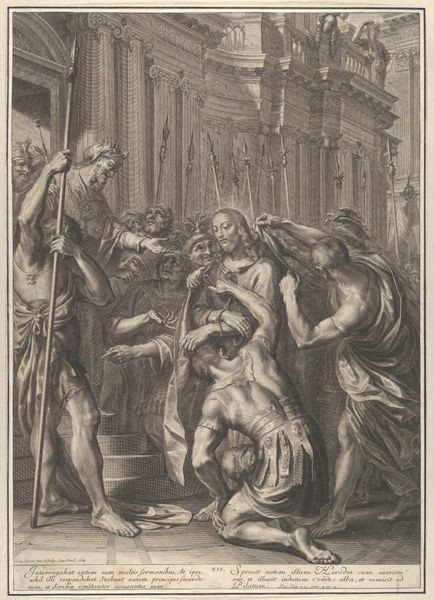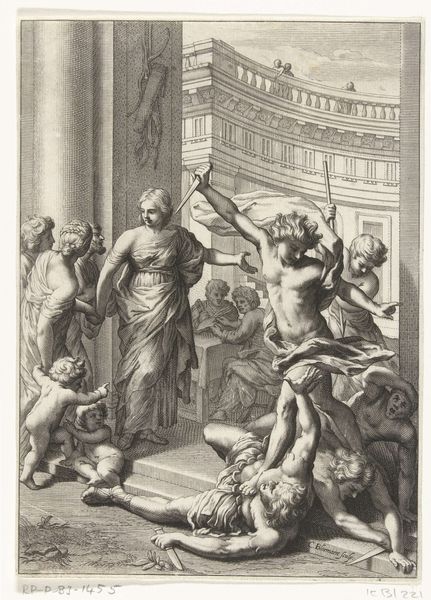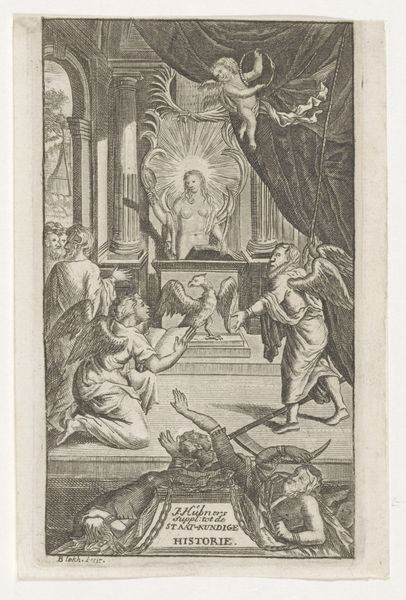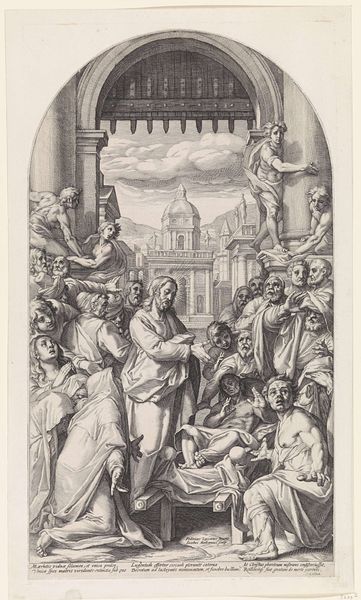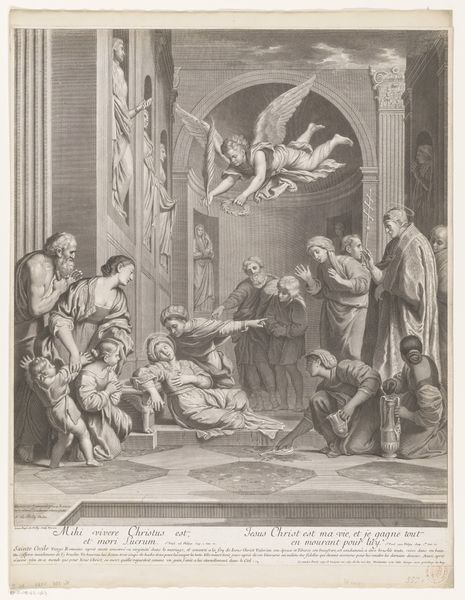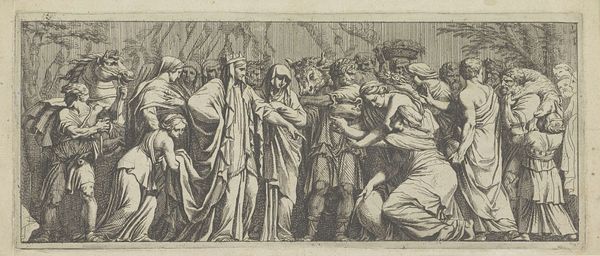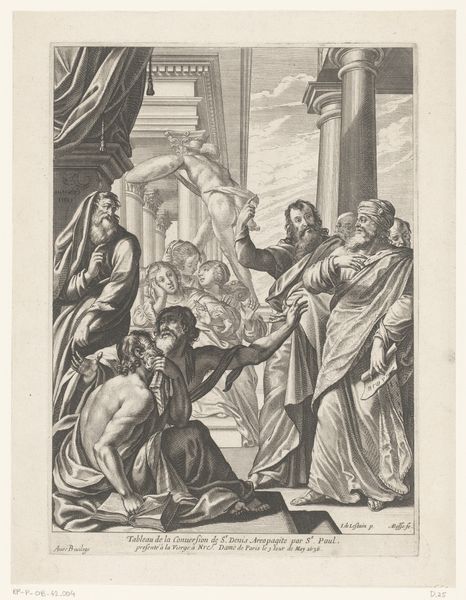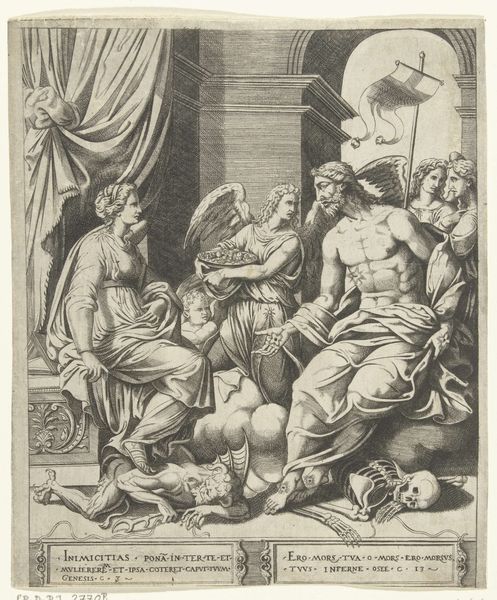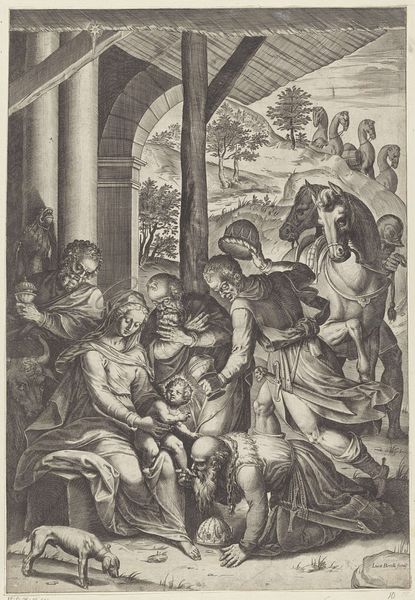
Onthoofding van twee koningen in opdracht van een Romeins keizer 1670
0:00
0:00
print, engraving
#
narrative-art
#
baroque
# print
#
old engraving style
#
caricature
#
classical-realism
#
figuration
#
history-painting
#
engraving
Dimensions: height 313 mm, width 207 mm
Copyright: Rijks Museum: Open Domain
Curator: The print we are looking at is from 1670, and it's called "Onthoofding van twee koningen in opdracht van een Romeins keizer," or "The Beheading of Two Kings Ordered by a Roman Emperor" by Gerard de Lairesse, currently housed in the Rijksmuseum. Editor: It's rather striking, isn't it? The cold detachment, emphasized by the static rendering, adds a disturbing weight. The almost obsessive detail… I find myself drawn to the implied sounds—the scrape of the blade, the hushed anticipation. Curator: Absolutely. Lairesse positions this depiction of historical power and violence within a broader critique of authority. Who decides who is king, and by what justification are they disposed? What is the relationship between spectacle, violence, and governance? Editor: It’s potent symbolism, yes? The severed heads, particularly, serve as potent symbols of fallen power and injustice. The way the executioner almost seems to preen—it feels reminiscent of how classical artists portray the triumph of morality over death. Curator: But is it triumph, really? Or the cold, brutal assertion of power? Note the Roman emperor sitting impassively in the background. His detachment, rendered with meticulous precision, underscores the banality of evil. It serves as a commentary on the dangers of unchecked power within institutional frameworks. Editor: His stance, the toga, all very reminiscent of Roman imagery used through different periods to denote authority. It echoes across cultures and eras, this visual vocabulary. The visual motif has carried weight far beyond the actual Roman Empire. The upraised hand on the onlookers to the left feels like he is signaling caution or dissent in disagreement to the execution. Curator: Precisely. Lairesse’s skill lay in his ability to subtly infuse classical motifs with pointed contemporary social commentary, revealing the instability inherent within any power structure. A crucial look at not just who holds power but how it’s exerted and maintained. Editor: Thinking about the recurring depictions of decapitation in art and culture across time, this one stands out as particularly chilling. The graphic realism married to the artist's classical training evokes a deep unease. A reflection, perhaps, on our own participation in cycles of violence. Curator: Yes. A powerful testament to how history and art converge to force us to grapple with the uncomfortable truths about the past and how those patterns manifest into our present moment.
Comments
No comments
Be the first to comment and join the conversation on the ultimate creative platform.
